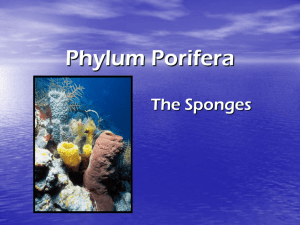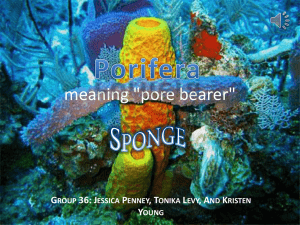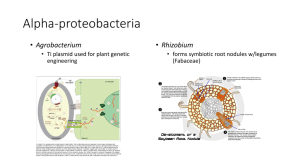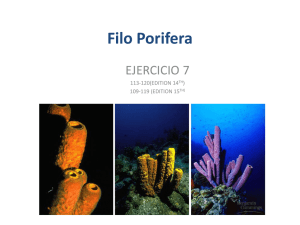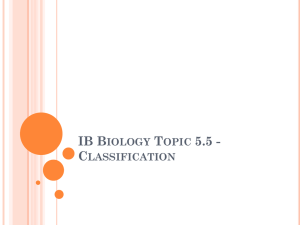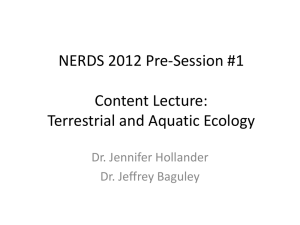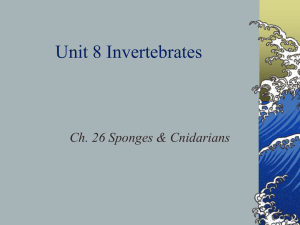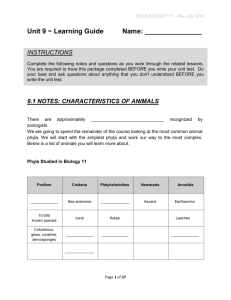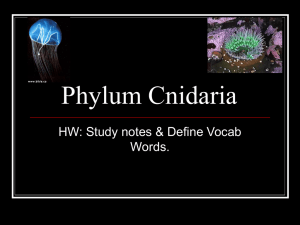Proifera
advertisement
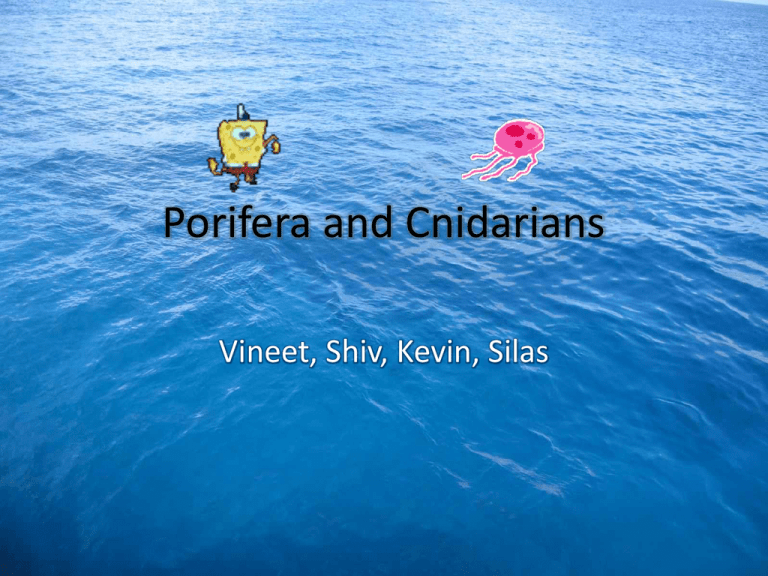
Porifera and Cnidarians Vineet, Shiv, Kevin, Silas Germ Layers Germ layers a group of cells formed when the embryo is being developed. All animals more complex than porifera have three or more primary germ layers. Porifera • Porifera have no germ layers Cnidaria • Cnidarians mostly have two germ layers, an endothermic and an ectodermic germ layer Symmetry Porifera • Not symmetric Cnidaria • Cnidarians are radially symmetric Coelom A coelom is a fluid filled body cavity that is usually in the middle germ layer or mesoderm. The coelom allows the internal organs to develop independently of the body wall. Porifera Cnidaria • Both porifera and cnidarians are acoelomates or don’t have coeloms • This means that the organs are subjected to crushing forces underwater Digestive Tract Porifera • These organisms have no digestive tract Cnidarians • Cnidarians have a gastrovascular cavity for digestion which helps the organism digest and distribute nutrients and particles throughout the body Cephalization Porifera • They have no cephalization because they have no nervous tissue or head Cnidaria • These organisms have a small degree of cephalization although they are radial symmetric because they have a head and concentrated neural and photoreceptive cells Segmentation Porifera • None Cnidaria • None Neither one of these phyla are segmented Skeleton and appendages Porifera • Porifera have an exoskeleton that is made from calcium carbonate which help defend them from predators. • They have no appendages at all Cnidaria • Cnidarians have a hydrostatic skeleton which help the organism contract and retract against the gastrovascular cavity • They have some oral appendages by the mouth to help it feed. Circulatory System Porifera • Porifera do not have circulatory systems. By beating their flagella, they cause water to flow through the animal. Cnidaria • Cnidarians do not need a circulatory system because all of their cells are already in contact with water, which contains all the nutrients they need. Respiratory System Porifera • Also does not have a respiratory system. The sponge’s cells absorb oxygen through diffusion from the water flow system. Cnidaria • Cnidarians absorb oxygen and release carbon dioxide into the surrounding water through their cell layers. They do not have distinct respiratory organs. Reproduction Porifera • Pieces of sponge are able to respawn into whole new sponges. Asexual reproduction also occurs through budding. Each bud develops into a new sponge. Cnidaria • Cnidarians can undergo both asexual and sexual reproduction. Asexual reproduction results in identical clones through budding. Fin


